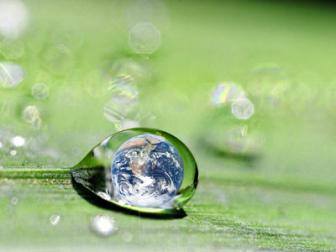
By TreeLiving.com If nothing else, the recent droughts throughout the south and southwestern United States serve as a reminder of how precious commodity water is. Though we usually don’t give it a second thought, the simple act of turning on the faucet and getting safe and clean drinking water is truly a marvel. Because water is such a valuable resource, it’s imperative that we all do our part to conserve water and reduce any unnecessary consumption. Here are some tips for doing your part. Water your lawn in the early morning or late evening. Watering your lawn in the middle of the day, when temperatures are highest, means that more water evaporates before it can get down into the grass roots. If you live someplace where the sun is particularly strong, then watering at mid-day can actually burn the grass. The best way to follow this kind of schedule is to put your sprinkler system on an automatic timer. If you can’t use a timer, find the time at the beginning or end of the day that works best for you. Don’t run the dishwasher when it’s only half full. Many of our modern conveniences and appliances can help save water, but only if they are used properly. For example, while some dishwashers have different settings or smaller load sizes, many do not. Some dishwasher models use the same amount of water regardless of how many dishes are inside, so try to get the best “bang for your gallon” by only running your dishwasher when it’s full. Consider a rain barrel. If you garden, even if it’s just a small flower garden, you’ll find that you’ll use a lot of water on your plants. You can reduce the amount of fresh water you take from your hose by using a rain barrel to catch rainwater that would otherwise fall on your roof and flow down to the gutters. Placing a rain barrel at the bottom of your most active rain spout is an excellent way to save water that can be used for many days to come. A single storm can easily fill a 55 gallon barrel, and the rainwater you collect can be used to water your plants until the next time it rains. There are other small steps you can take which might not seem like much, but which add up over time and result in huge water savings. For example, if the water coming out of your faucet takes a bit of time to go from warm to cold, then every time you get a drink you might end up letting a quart or two of water go down the drain waiting for the water to get cold. Instead, consider keeping a pitcher of water in your refrigerator that’s always cool. And if you don’t finish drinking your glass of water, simply dump what’s left into one of your house plants – don’t dump it down the drain. Finally, take every opportunity to turn off a faucet that you are not actually using. If you still let the water run while you brush your teeth, break yourself of that habit. By taking lots of little small steps, you’ll be able to conserve more water than you might have thought possible.

